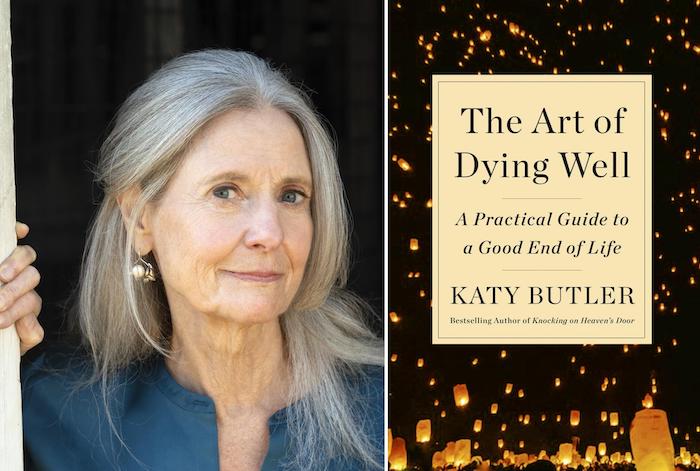
By Trish Rodriguez*
I have to confess that I am a Katy Butler fan. When I started the journey to become an End of Life Doula, her Knocking on Heaven’s Door was one of the first books that I read. I didn’t so much read the book as devoured it, often catching a sob in my throat as I read her deeply personal account of the horror show that became her fathers final years. I admired the courage and honesty of the parts of the book that were memoir, and the research on the current culture of American healthcare with respect to death. I agreed that our way of dying in the good ol’ USA has come to leave something to be desired.
In her newest work The Art of Dying Well – A Practical Guide to a Good End of Life, Katy picks up the narrative in a new and accessible way. She divides the process of moving toward the end into seven unique segments defined not so much by age but by ability and functionality. At the beginning of each of these chapters she has a list of statements and suggests that if many of these apply to you now, this might be where you find yourself. I found this approach fresh and, best of all, non-threatening. This might be just the way to start a conversation with a unwilling family member.
In the first segment, aptly titled Resilience, we learn that in this stage of well being we can still dramatically impact our health, longevity, and ultimately the quality of our death. By building reserves (aka altering what we eat and whether we’re active enough), finding allies in preventative medicine, and increasing our circle of friends and acquaintances, we are still in the drivers seat with regard to how things will go for us as our situation changes. This perspective gives lots of practical advice for those who may think there is plenty of time.
With each ongoing chapter comes an inevitable decline – not according to any decade of life or disease process – but according to naturally decreasing functionality. I like that she is careful to follow this definition, as people age as they darn well please, and I personally know 90 year olds who are still more capable than I am. This lets you find your home page, so to speak, without feeling like a failure or self fulfilling a prophecy to act your age. Every chapter offers practical advice; about healthcare, money, housing, and all those pesky details like advanced directives and wills. In nearly every chapter there are personal accounts of folks who managed things well, or not so well, and lots of food for thought.
There was a great deal of material that wasn’t new to me, but I work with dying people. In my every day life, I am always shocked at how hard working, responsible people don’t bother with a will or advanced directive… because? They aren’t going to die? Or they’re not going to die tomorrow? This book may be just the ticket to get you going, or to give to that parent who is dragging their feet about preparing for anything. With a helpful glossary and pages and pages of useful references included, this will certainly be a ‘go to’ book in my personal library and in my practice.
* Special correspondent, Trish Rodriguez, is an End of Life Doula and hospice vigil volunteer in Anacortes, WA.
